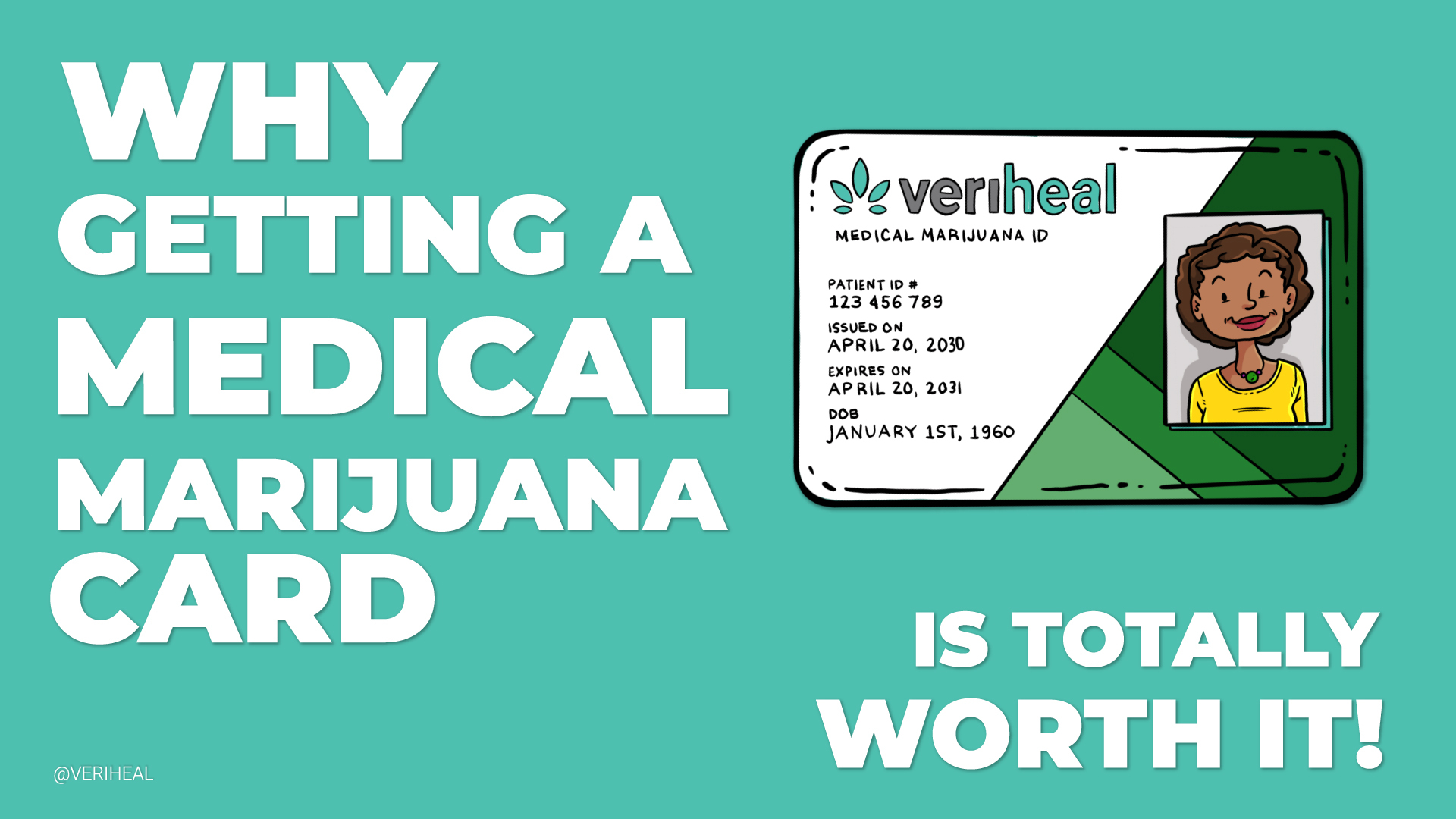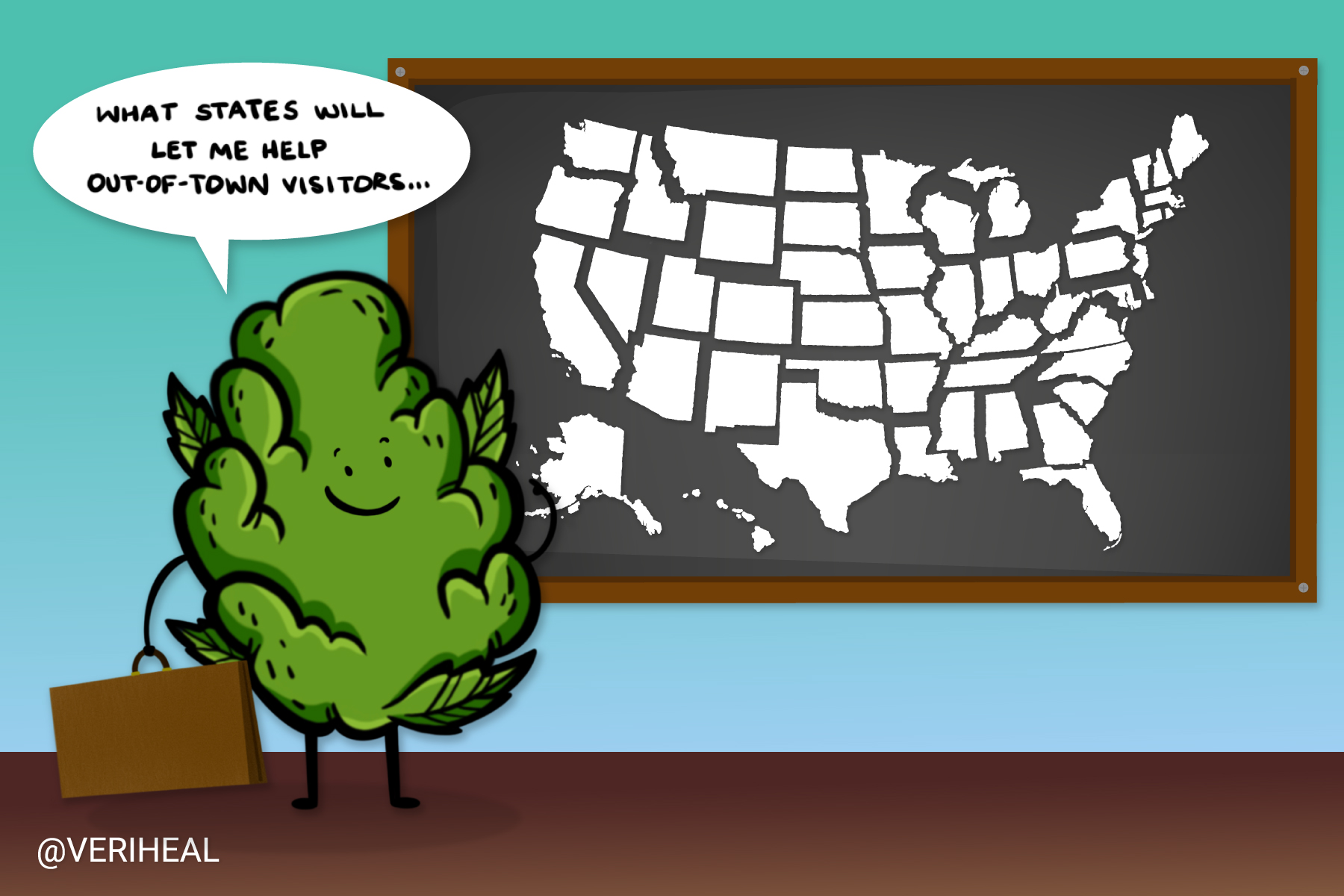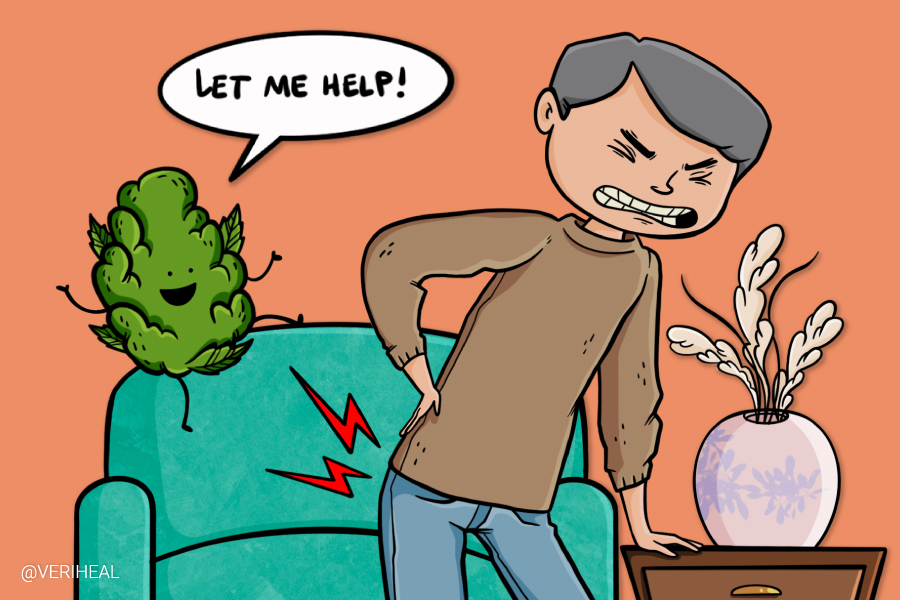Glaucoma Patients Try Cannabis as a Medical Alternative

Glaucoma causes an increase in intraocular pressure (IOP), the fluid pressure inside the eye, which results in the patient having eye pain and seeing halos around lights. It can eventually lead to blindness if a patient’s eye pressure continues to increase. In fact, glaucoma is the leading cause of irreversible blindness worldwide. It can also develop without any symptoms at all, thus highlighting the need for regular eye exams and appropriate glaucoma therapy and treatment. In the past, the only ways to treat glaucoma were surgical procedures or taking prescription eye drops in order to lower pressure in the eye. New treatment options include laser eye surgery and glaucoma medications that can prevent blindness or other serious complications (5). Many of these medications and procedures are important and effective, but may also have adverse side effects (3).
There are a prominent amount of cannabinoid receptors in the ocular (eye) tissue, which are responsible for regulating the pressure in the eye. In the 1970s, research showed that tetrahydrocannabinol (THC) (a prominent cannabinoid in marijuana) in pill or injection form effectively lowered eye pressure for 3-4 hours (2). This makes glaucoma one of the oldest medical conditions historically treated by medical cannabis in Western medicine. Read more about the endocannabinoid system here.
However, THC’s short duration of action means one would have to continuously or regularly consume it, which would likely be impractical for most due to cognitive effects, potential adverse effects like the impact of smoking marijuana cigarettes on the lungs, and cost. Therefore, it is important to regularly follow up with an ophthalmologist for managing glaucoma and preventing serious complications with approved treatments, and possibly use adjunct THC. Conversely, cannabidiol (CBD) has actually been shown to elevate eye pressures (7). Further research on long-term outcomes is necessary before professional societies can endorse cannabis for glaucoma.
Pros & Cons of Medical Cannabis for Glaucoma
Let’s look in more detail at some of the pros and cons of the use of marijuana for glaucoma.
Pros
- Effective at temporarily reducing ocular eye pressure (1).
- May theoretically help prevent the progression of glaucoma, but no long-term data exists (1)(7).
- Helps reduce the anxiety associated with having a chronic condition (10).
- Reduces chronic pain (10).
- Controls nausea (10).
Cons
- Over time, tolerance increases, and eye pressure changes aren’t as strong, resulting in higher doses of cannabis needed for the same effect (1).
- THC only reduces eye pressure for 3-4 hours. In order to control eye pressure, a patient would need 8-10 doses of cannabis a day (if smoking marijuana) (1).
- Various methods of cannabis consumption have been studied specifically for glaucoma since the 1970s using inhaled, IV (research only), topical and oral THC. The oral THC produced quicker onset but also faster offset, likely requiring more repeated doses, and thus, higher likelihood of side effects of marijuana (12).
- High cost compared to traditional treatment of glaucoma (1).
- Can irritate a patient’s eyes (1).
- Cannot substitute or replace approved glaucoma treatments (8).
- Long-term side effects of cannabis are still unknown (8).
- Until more research is done to prove its potential benefits, cannabis is not yet officially endorsed by ophthalmological societies such as the American Glaucoma Society or the American Academy of Ophthalmology (ophthalmology is the study of the treatment of eye disorders) (8).
It is important to let your eye doctor know if you are using cannabis and you have glaucoma because it can affect your eye pressure readings (1).
What Causes Glaucoma?
The risk factors for glaucoma are age, race, and elevated intraocular pressure (3). People most at risk include people over age 60, African Americans or Hispanic/Latino persons over 40, and people with family history (5). Glaucoma is the most common cause of irreversible blindness, but at least half of patients are unaware that they have it. In most cases, blindness can be prevented with appropriate treatment, which is why visiting the eye doctor is so important, even for people who don’t wear glasses or contact lenses (6).
When an eye is functioning properly, the aqueous humor—a clear liquid in the eye—circulates between the lens and the back of the cornea. In people who have high eye pressure, the outflow of the fluid becomes restricted (3). High eye pressures, cell dysfunction, medications, surgeries, certain diseases, poor blood flow, and mechanical disruptions can all cause irreversible optic nerve damage and result in glaucoma (11).
Most glaucoma treatments focus on trying to decrease intraocular eye pressure in order to prevent it from causing blindness. Unfortunately, reducing the eye pressure in patients doesn’t always slow the disease’s progress (3). Glaucoma can occur and even progress with normal eye pressures, thus emphasizing the need for specialty care in the detection and management of glaucoma (11).
Symptoms of glaucoma include, but are not limited to, eye throbbing pain, eye redness, headaches (usually on the same side as the affected eye), vision loss, blurry vision, nausea, vomiting, and dilated pupils. While cannabis may not be able to slow the progression of the disease, it may be able to help alleviate some of these symptoms.
Types of Glaucoma
There are four main types of glaucoma. Here are the differences between them (2):
Primary Open-Angle Glaucoma
- Most common form of glaucoma.
- Develops gradually over time.
- Caused by the slow clogging and drainage of drainage canals, which creates increased eye pressure.
- Lifelong condition.
- The angle where the cornea and iris meet is normal.
Angle-Closure Glaucoma
- Caused by blocked drainage canals, resulting in increased eye pressure.
- Acute attacks may cause symptoms like blurry vision and severe eye pain.
- There is a closed or narrow-angle between the iris and cornea.
- Develops quickly.
- Requires immediate medical attention.
Normal-Tension Glaucoma
- The optic nerve is damaged even though eye pressure is normal.
Congenital Glaucoma
- Occurs in babies from the incomplete development of the eye’s drainage canals while the baby is developing in the womb.
Several other types of glaucoma exist and are further categorized by age of onset, cause, or site of obstruction. Remember to get regular eye exams and always seek specialty care for glaucoma as the complications can be serious and permanent (9).
For those seeking more information about medical marijuana, the team at Veriheal can set you up with a medical marijuana doctor or a cannabis coach to learn more.
Note: Veriheal does not intend to give this as professional medical advice. Do not attempt to self-diagnose, or prescribe treatment based on the information provided on this page. Always consult a physician before making any decision on the treatment of a medical condition.
1. Bollinger, K. E., MD, & Halenda, K. M., MD. (2020, October 1). Should You Be Using Marijuana to Treat Your Glaucoma? Retrieved January 25, 2021, from https://www.glaucoma.org/treatment/should-you-be-using-marijuana-to-treat-your-glaucoma.php?gclid=Cj0KCQiA0rSABhDlARIsAJtjfCeWwkt4absw6gh9F_H7u3A1FYoqpJKRFECwTk-WTVXE3h0ENuYxXHwaAls-EALw_wcB
2. Glaucoma and Marijuana: What Ophthalmologists Want You to Know. (2019, January 25). Retrieved January 25, 2021, from https://healthcare.utah.edu/healthfeed/postings/2019/01/glaucoma-marijuana.php
3. Mack A, Joy J. Marijuana as Medicine? The Science Beyond the Controversy. Washington (DC): National Academies Press (US); 2000. 9, MARIJUANA AND GLAUCOMA. Available from https://www.ncbi.nlm.nih.gov/books/NBK224386/
4. Types of Glaucoma. (2020, June 2). Retrieved January 25, 2021, from https://www.glaucoma.org/glaucoma/types-of-glaucoma.php?gclid=Cj0KCQiA0rSABhDlARIsAJtjfCcNncX-oTd1hII61t20nobu4BDGYHAcZyd5p7KZkpOtvwZslB8TNEUaAiRgEALw_wcB
5. Glaucoma. (2020, July 28). Retrieved May 08, 2021, from https://www.nei.nih.gov/learn-about-eye-health/eye-conditions-and-diseases/glaucoma
6. Glaucoma Information Statistics. (2018, August 28). Retrieved May 08, 2021, from https://www.glaucomapatients.org/basic/statistics/
7. Tomida, I., Azuara-Blanco, A., House, H., Flint, M., Pertwee, R. G., & Robson, P. J. (2006). Effect of sublingual application of cannabinoids on intraocular pressure: a pilot study. Journal of glaucoma, 15(5), 349–353. https://pubmed.ncbi.nlm.nih.gov/16988594/
8. Turbert, D., & Gudgel, D. (2021, March 08). Does marijuana help treat glaucoma or other eye conditions? Retrieved May 08, 2021, from https://www.aao.org/eye-health/tips-prevention/medical-marijuana-glaucoma-treament
9. Types of glaucoma. (2018, April 11). Retrieved May 08, 2021, from https://www.glaucomapatients.org/basic/types-of-glaucoma/
10. Whiting, P. F., Wolff, R. F., Deshpande, S., Di Nisio, M., Duffy, S., Hernandez, A. V., . . . Kleijnen, J. (2015). Cannabinoids for medical use. JAMA, 313(24), 2456. https://jamanetwork.com/journals/jama/fullarticle/2338251
11. What is the cause of glaucoma? (2018, August 28). Retrieved May 08, 2021, from https://www.glaucomapatients.org/basic/causes/
12. Passani A, Posarelli C, Sframeli AT, et al. Cannabinoids in Glaucoma Patients: The Never-Ending Story. J Clin Med. 2020;9(12):3978. Published 2020 Dec 8. https://www.ncbi.nlm.nih.gov/pmc/articles/PMC7763320/








